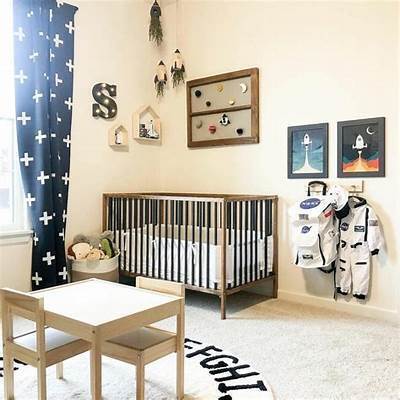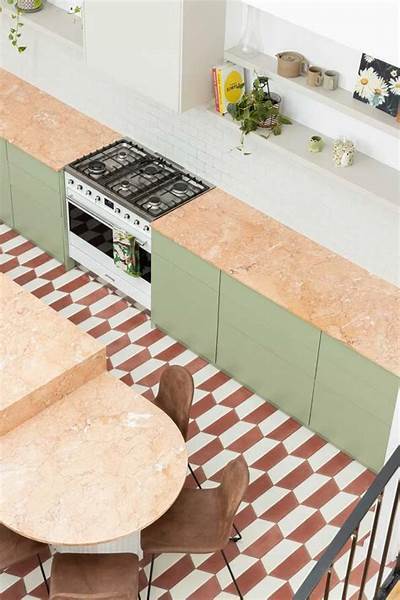Kids' Bedroom Design: A Comprehensive Guide
Designing a child's bedroom is more than just picking out cute bedding; it's about creating a space that fosters creativity, encourages independence, and provides a comfortable sanctuary for rest and play. This comprehensive guide will walk you through every step, from planning and theme selection to furniture choices and décor, helping you create the perfect haven for your little one.
Planning and Theme Selection: The Foundation of Your Design
Before you dive into paint swatches and furniture catalogs, take some time to plan the overall design. This includes considering your child's age, personality, and interests. A toddler's room will have different needs than a teenager's.
Considering Your Child's Age and Needs
Toddlers (0-3 years): Focus on safety and functionality. Choose soft, non-toxic materials, sturdy furniture with rounded edges, and easy-to-clean surfaces. Storage is crucial for toys and clothes. A crib, changing table, and ample storage are essential.
Preschoolers (3-5 years): Introduce playful elements and encourage imagination. A low bed, comfortable seating, and designated play areas are important. Storage solutions should be accessible to your child, promoting independence.
School-Aged Children (6-12 years): Design a space that supports learning and play. Include a dedicated study area with a desk and chair. Incorporate shelving for books and school supplies. Consider their hobbies and interests when choosing a theme.
Teenagers (13+ years): Teenagers crave personalization and independence. Involve them in the design process to ensure they feel ownership of their space. Prioritize functionality with ample storage, comfortable seating, and a workspace suitable for studying and hobbies.
Choosing a Theme: Inspiring Creativity
Selecting a theme is a great way to unify the design and create a cohesive look. Consider your child's interests:
- Animals: Jungle, safari, farm, or underwater themes are always popular.
- Space: Planets, stars, and rockets can create a sense of wonder.
- Fairytales and Fantasy: Castles, fairies, unicorns, or pirates can spark imagination.
- Sports: Design the room around their favorite sport, incorporating team colors and memorabilia.
- Nature: Incorporate natural elements like wood, plants, and earthy tones for a calming atmosphere.
- Cars and Transportation: A great choice for vehicle enthusiasts.
Remember, a theme doesn't have to be overly literal. You can incorporate subtle elements to create a cohesive and stylish look without overwhelming the space.
Furniture Selection: Functionality Meets Style
Choosing the right furniture is vital for both functionality and aesthetics. Consider the size of the room and the amount of storage you need.
Essential Furniture Pieces
- Bed: Choose a bed appropriate for your child's age and size. Consider a trundle bed or bunk beds to maximize space.
- Wardrobe or Closet System: Ample storage is essential for clothes, toys, and other items. Built-in wardrobes are great space savers.
- Desk and Chair (for older children): A comfortable and functional workspace is crucial for studying and homework.
- Bookshelves: Provide easy access to books and encourage reading.
- Nightstand: A place for a lamp, books, and other essentials.
- Seating: A comfortable armchair or beanbag chair provides a cozy spot for reading or relaxing.
Choosing the Right Materials
Opt for durable and child-friendly materials. Consider the following:
- Wood: A classic and versatile choice that's easy to clean and maintain.
- Metal: Durable and sturdy, but can be cold to the touch.
- Plastic: Lightweight and easy to clean, but may not be as durable as wood or metal.
Color Palette and Wall Decor: Setting the Mood
The color palette and wall décor play a significant role in creating the overall atmosphere of the room. Consider the following:
Color Psychology in Kids' Rooms
Calming Colors: Blues, greens, and lavenders create a peaceful and relaxing environment, ideal for promoting sleep.
Energetic Colors: Yellows, oranges, and reds stimulate creativity and energy, suitable for play areas.
Neutral Colors: Grays, beige, and whites provide a versatile backdrop for incorporating various colors and themes.
Wall Decor Ideas
- Paint: A fresh coat of paint can dramatically transform a room. Consider using stencils or wall decals to add personality.
- Wallpaper: Adds texture and visual interest. Choose child-friendly and easy-to-clean wallpapers.
- Wall Murals: Create a focal point and bring a chosen theme to life.
- Artwork: Display your child's artwork or purchase prints that reflect their interests.
- Shelves: Decorative shelves can display books, toys, and other items.
Lighting and Textiles: Adding Comfort and Warmth
Lighting and textiles play a crucial role in creating a comfortable and inviting atmosphere.
Lighting Solutions
Ambient Lighting: Provides overall illumination for the room. A ceiling fixture or recessed lighting is ideal.
Task Lighting: Provides focused light for specific activities, such as reading or studying. A desk lamp or floor lamp is essential.
Accent Lighting: Adds visual interest and highlights specific features, such as artwork or shelves. Fairy lights or wall sconces can be used.
Textiles and Soft Furnishings
Rugs: Add warmth, comfort, and visual interest to the floor. Choose a rug that's easy to clean and durable.
Curtains: Control light and privacy. Choose curtains that match the overall design scheme.
Bedding: Choose bedding that's comfortable, soft, and machine-washable. Consider using a duvet cover to easily change the look of the bed.
Throw Pillows and Blankets: Add texture, color, and comfort to the room.
Storage Solutions: Keeping the Room Organized
Efficient storage is crucial for keeping a child's room organized and clutter-free. Consider the following:
Types of Storage
- Wardrobes and Closets: Essential for storing clothes and other items.
- Drawers: Provide convenient storage for smaller items.
- Shelving: Ideal for books, toys, and decorative items.
- Toy Bins and Baskets: Easy to use and transport, great for storing toys.
- Under-bed Storage: Maximize space by utilizing the area under the bed.
Tips for Effective Storage
- Label everything: Makes it easier for your child to find and put away their belongings.
- Use clear containers: Allows you to easily see what's inside.
- Involve your child in the organization process: This teaches them responsibility and helps them to keep their room tidy.
Safety Considerations: Creating a Safe and Secure Space
Safety should be a top priority when designing a child's bedroom. Consider the following:
Safety Tips
- Secure furniture to the wall: Prevent tip-overs, especially dressers and bookshelves.
- Use safety gates on stairs: Prevent falls if the room is near a staircase.
- Cover electrical outlets: Prevent electrical shocks.
- Choose non-toxic paints and materials: Protect your child's health.
- Install smoke detectors and carbon monoxide detectors: Ensure your child's safety in case of emergencies.
- Keep cords and wires out of reach: Prevent strangulation or electrical hazards.
By following these guidelines, you can create a beautiful, functional, and safe bedroom for your child that they'll love for years to come. Remember to involve your child in the process as much as possible to ensure they feel a sense of ownership and pride in their space.


この記事へのコメント